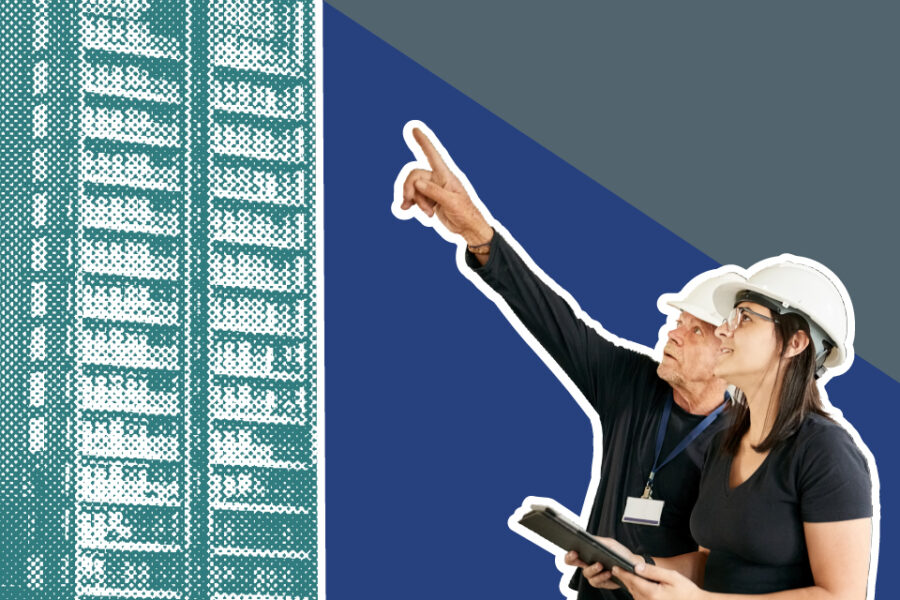Understanding the golden thread
The purpose of the ‘golden thread’ is to have the right information in order to understand the building and the steps needed to keep both the building and the people living in it safe.

To ensure dutyholders identify, understand, manage and mitigate building safety risks throughout a higher-risk building’s life-cycle, those responsible for building safety must retain a ‘golden thread of information.’
The purpose of the golden thread is to have the right information to understand the building and the steps needed to keep the building and people living in it safe.
It will hold the information that those responsible for the building require, to:
- show that the completed building and any later building work meets the requirements of applicable building regulations
- identify, understand, manage and mitigate building safety risks, to prevent or reduce the severity of the consequences of fire spread or structural collapse throughout a building’s life-cycle
Having a golden thread means that those people responsible, will have easily accessible, reliable, up to date and accurate information. Without this information, it is very difficult to manage buildings safely.
This is because the thread content is information a dutyholder needs to enable them to fulfil and demonstrate that they are carrying out their legal duties.
Building a safer future
The introduction of a golden thread of information was a recommendation in Dame Judith Hackitt’s report, Building a safer future. It is there to support duty-holders in designing, constructing and managing their higher-risk buildings as holistic systems.
It involves keeping a digital record of crucial building information – starting from design phase and continuing throughout a building’s life-cycle. The government decided that the thread must be stored digitally, but this can be on multiple systems.
The golden thread comprises two parts: building work, and maintenance. This ensures any modifications or enhancements to the building are accurately documented. It also enables building owners to proactively identify potential risks or hazards and take corrective action.
It’s important those responsible for the building know where up-to-date information is and can give access to others needing it. This includes anyone responsible for maintaining or working on the building and others, such as residents and emergency responders.
When does the golden thread start?
The thread needs to be created before building work starts and must be updated throughout the design and construction process. For example where, through the change control process – the plans for the building work are changed.
When building work is completed, the thread must be handed to the Accountable Person(s) responsible for the occupied building.
Maintaining an accurate, up-to-date source of building information will ensure owners can better manage their buildings and optimise safety.
So, remember your building’s information must be:
- kept digitally
- kept securely
- a building’s single source of truth
- available to people who need the information to do a job
- available when the person needs the information
- presented in a way that can be easily used
Essentially, the thread is all about the right people having the right information when they need it.
- right people – those who require the information to carry out a function
- right information – presented in a way that the receiver can use
- right time – when the information will add value
Each golden thread will be individual, bespoke, and specific to the building and group of residents and occupants.
Above: An example section from our free building safety training for Resident Directors, which explains the golden thread of information.
Who is responsible for the golden thread?

During the design and construction phase:
Duty to ensure arrangements to keep and manage information are place rests with the client or someone on their behalf. This includes ensuring principal designers and principal contractors have access, for the purpose of maintaining the golden thread.
During occupation:
The Accountable Person (AP) is responsible for coordinating the golden thread, keeping it updated – ensuring it is accurate and accessible. And when they can’t find this information, they need to justify why.
The Accountable Person may be an individual, partnership or corporate body. There may also be more than one AP for a building. If there are multiple APs, then the Principal Accountable Person (PAP) will take lead responsibility for the thread.
Where the building already exists, APs need to make reasonable enquires to find information to assess and manage safety risks of fire spread and structural stability.
When a building is being refurbished this may involve dutyholders, PAPs and APs, as many buildings remain occupied.
Construction Leadership Council guidance on the golden thread
The Construction Leadership Council (CLC) led a panel discussion on the golden thread at the BSR Conference 2024
CLC has also published technical guidance on the golden thread requirements for higher-risk buildings.
Read the full CLC guidance, or the guidance summary.
Further guidance about the golden thread is available on GOV.UK, you can read it here:
Keeping information about a higher-risk building: the golden thread – GOV.UK (www.gov.uk)